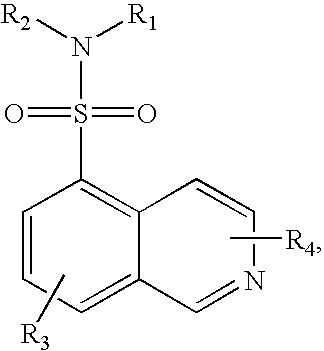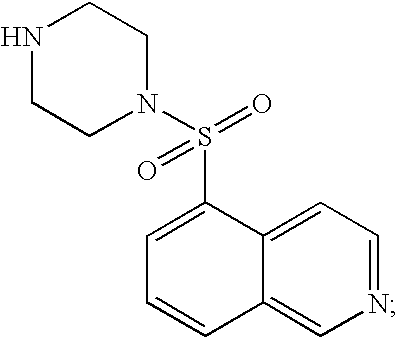Clonal culture of human pluripotent stem cells
a technology of pluripotent stem cells and clonal culture, which is applied in the field of clonal culture of human pluripotent stem cells, can solve the problems of inability to expand in significant numbers in in vitro culture, development conditions, and inability to readily obtain pluripotent human cells of many types, and achieves low cloning efficiency, economical and effective, and improved cloning efficiency of stem cell culture conditions.
- Summary
- Abstract
- Description
- Claims
- Application Information
AI Technical Summary
Benefits of technology
Problems solved by technology
Method used
Image
Examples
example 1
Identification of Small Molecules that Increase ES Cell Cloning Efficiency
[0031]Methods and Materials.
[0032]The small molecules effective to enable cloning of ES cell colonies in the defined medium were identified in a small molecule screen for the desired activity of enabling cloning.
[0033]The screen used a small molecule library made up of characterized compounds with known bioactivity that was purchased from Sigma-Aldrich (St. Louis, Mo.). Members of the library were dissolved in DMSO to a concentration of 1 mM. All other chemicals used were purchased from Sigma, unless otherwise indicated in the text. H1 human ES cells (WiCell Research Institute; Madison, Wis.) were grown in the defined TeSR™1 medium, which was prepared as described in Ludwig et al., supra.
[0034]The assay was performed at the Keck-UWCCC Small Molecule Screening Facility (University of Wisconsin—Madison; Madison, Wis.) in 96-well microplates (Nunclon / Nunc; Roskilde, Denmark) using a Beckman Biomek® FX Laboratory ...
example 2
ROCK Inhibitors Increase ES Cell Cloning Efficiency
[0063]Methods and Materials.
[0064]The experiments described in Example 1 were repeated with H-1152 (EMD Chemicals, Inc. / Calbiochem; San Diego, Calif.) and Y-27632 (EMD Chemicals, Inc. / Calbiochem). Briefly, H-1152 or Y-27632 was dissolved in DMSO to a concentration of 20 mM. H1 human ES cells were grown on Matrigel®—coated plates in TeSR™1 medium at a density of 100,000 cells per ml. H-1152 and Y-27632 were added to wells on their own plates at a final concentration of 20 μM, 15 μM, 10 μM or 5 μM in DMSO. DMSO and HA-100 (10 μM) were used as the negative and positive controls, respectively. The plates were treated every other day for a total of four days. Colony formation was detected with the ALP assay described above.
[0065]In a second experiment, H-1152 and Y-27632 were added to wells on their own plates at a final concentration of 5 μM, 500 nM, 50 nM or 5 nM in DMSO. DMSO and HA-100 (10 μM) were used as the negative and positive c...
PUM
| Property | Measurement | Unit |
|---|---|---|
| pH | aaaaa | aaaaa |
| diameter | aaaaa | aaaaa |
| physical structures | aaaaa | aaaaa |
Abstract
Description
Claims
Application Information
 Login to View More
Login to View More - R&D
- Intellectual Property
- Life Sciences
- Materials
- Tech Scout
- Unparalleled Data Quality
- Higher Quality Content
- 60% Fewer Hallucinations
Browse by: Latest US Patents, China's latest patents, Technical Efficacy Thesaurus, Application Domain, Technology Topic, Popular Technical Reports.
© 2025 PatSnap. All rights reserved.Legal|Privacy policy|Modern Slavery Act Transparency Statement|Sitemap|About US| Contact US: help@patsnap.com



